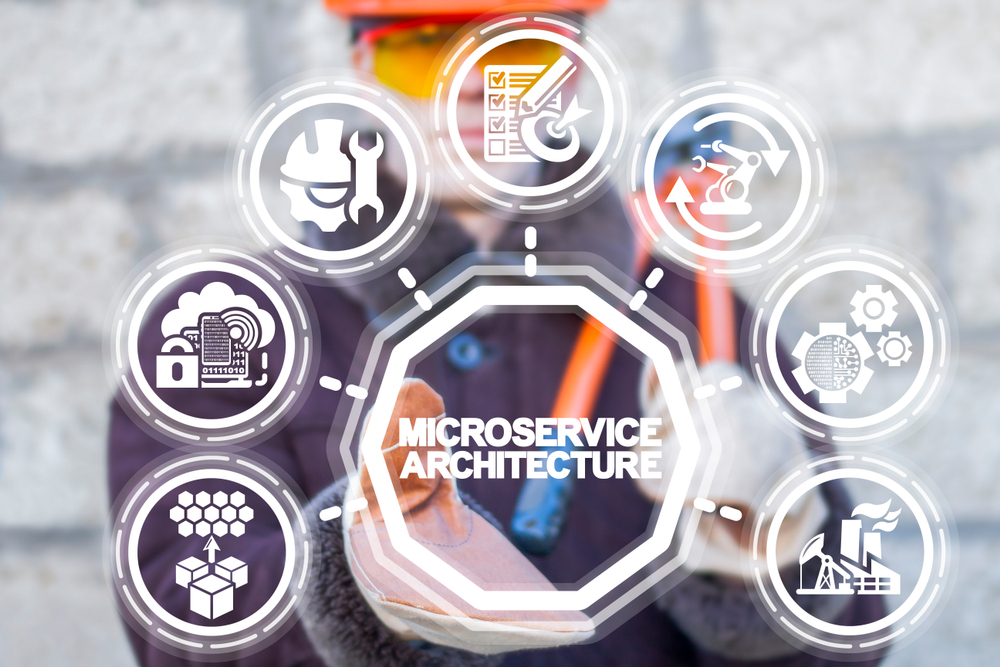
How Implementing Microservices Can Boost Your Software Development Initiative?
When it comes to adapting to ever-changing business needs, a microservice architecture is a more efficient and adaptable solution. Microservices are a more convenient way for certain business owners to organize their employees and processes. Let’s take a look at why you should partner with a custom software development company and what you should consider when choosing one.
Table of Contents
However, should you use microservices?
As software monoliths become increasingly impractical in today’s fast-paced competitive world, platform owners across numerous industries are increasingly raising this issue. For high-Speed custom software development, a microservices architecture is a must.
In this post, we’ll look at some of the most important factors to consider when determining if a microservices architecture is right for your platform.
Microservices Architecture’s Pros
Because of its simplicity, speed to market, and ability to accommodate rapidly growing user bases, microservices are gaining popularity among businesses across a wide range of industries. There are advantages of microservices architecture over monoliths, inclusive of speed, size, and agility.
Shorter Time to Release
Developing and deploying large monolithic programs can take months or even years. This could cause you to fall behind the product launches of your competitors or make it difficult for you to react quickly to customer feedback.
With the help of third-party microservices, you may significantly reduce the time it takes to get your product to market. In addition, because the services are split, they can be generated and supplied by smaller, dedicated teams at the same time. Additionally, you have more freedom to pick the best-of-breed services for each service, regardless of the technology stack.
Finally, microservices aid in the development of a minimal viable product. It’s better to focus on a few core services first and then add more later rather than delivering all of your desired features at once.
The Introduction of New Features Will Be Quicker
Redeploying a monolithic application is required for any changes or updates. Upgrading or creating new versions of a large monolith takes more time and work as it grows larger.
Specialized teams can iterate at their own pace without interfering with or crashing the entire system because microservices are individually maintained. As a result, you may deliver new features quickly and frequently, with little to no risk of damaging other parts of the platform.
You can now prioritize and handle feature requests from a commercial perspective, rather than just a technical one, because of this increased agility. When it comes to making changes that promote user engagement or generate income, technology should not impede your efforts.
Scalability That is Affordable
To scale a single service in a monolithic design, you’ll have to redeploy the entire app. You may not be able to keep up with escalating demand if you spend too much money on this.
In addition to greater speed and flexibility, microservices design can save money on hosting costs because each service can be independently scaled to meet demand. It’s also possible to arrange a single service to automatically expand capacity until the load need is reached and then scale back down to its usual capacity.
More Assistance For Development
There are no limits to the number of UIs you can create using microservices design. This is a major advantage of microservices design for companies that are constantly planning for the future.
For a long time, websites and mobile apps shared no codebases at all, which meant that establishing a mobile app meant starting from scratch. Creating a mobile user interface no longer necessitates creating a separate service from your website’s user interface. Every time you make changes to the service, it works everywhere.
What the user sees, how they interact with it, and how they interact with it are all under your control. You may also test and deploy upgrades without affecting other services, which is a big advantage. Additionally, you have a wide range of services to choose from when new data access and usage methods arise. Voice commands for Alexa, digital signage, and whatever else comes next.
Programming Alternatives That are Optimal
All components of monolithic applications frequently share a single programming language and framework since they are interconnected and built with a single stack. You’ll be limited to making changes based on the decisions you make upfront, which could lead to delays or poor quality in future releases.
It’s easier to handle a wide range of datasets and processing requirements because microservices are loosely coupled and deployed independently. It is possible for developers to choose the language and storage solution that best suits each service without having to coordinate significant development efforts with other teams.
More Flexibility
When it comes to complicated platforms, the microservices design offers substantial advantages in terms of fault tolerance and separation. There is less risk of system failure and faster problem resolution.
Even a single flaw in a single feature can cause problems in other parts of the application or even cause the entire app to fail. A risk exists whenever a modification is made to a monolithic application. If a single service goes down, it’s unlikely to affect the rest of the system. You won’t be able to use the entire system because of the decreased capability.
As a result, microservices make it easier to detect and isolate bugs, as you can focus your search on a single software module. However, because of the potential for multiple points of failure, it is difficult to isolate the root cause of a problem in a monolith.
Consequently, monoliths make a recovery from failures more complex and time-consuming because you must rebuild and redeploy the entire application after an issue has been isolated and dealt with. If you use microservices, you’ll have a shorter time to resolution because engineers can fix bugs or roll back buggy changes in one service.
Rapid Onboarding Process
As a result of their smaller codebases, microservices make it easier to onboard new team members. Monolithic systems require new developers to learn how every service in the system interacts with one another.
There is no need to train new employees from scratch on your existing codebase or waste time searching the internet for programmers who are fluent in the single language you use. You may be able to find new personnel and get them to work more rapidly.
Automated Upgrades
Applications need to be updated or enhanced to stay up with changing customer expectations for digital experiences. Large monolithic apps are notoriously difficult and expensive to update.
As a result of microservices, you are freed from the burden of maintaining and paying for all of your system’s software upgrades. Your firm may take advantage of new features while also improving Stripe’s payment processing service. To manage your business, you don’t need a person who is an expert in payment processing and security on your staff.
In Summation: Monoliths or Microservices
Are you still undecided as to the ideal architecture for your platform? Here are a few things to keep in mind while choosing the architecture of your development initiative-
- Use third-party microservices to build up a platform or add new features quickly, and you’ll reap the benefits.
- If some of what you’re doing is unique, you may want to start with a monolith and build bespoke services or leverage 3rd parties for specialized purposes.
- If you don’t have a lot of money and need something up and going quickly, start with a monolith and then split it apart.
Software development services are a significant investment and a key part of your business ops and strategy. Your design decision could significantly impact everything from prices to operational efficiency. Consequently, we suggest taking the time to learn about your current and future business goals before deciding. We trust that this article will prove informational. Until next time, happy developing.
Author details:
Author Name: Mr. Pratik Mistry
Job title: Vice president in sales
Company name: Radixweb
Author bio–
I am Pratik Mistry, a rare mix of technologist and vice president in sales at Radixweb. My passion lies is in helping companies to grow revenues by delivering top notch custom software development solutions and build value-based partnerships. When not driving high-impact go to market strategies, I love to try new cuisines and going to the movies.
Social network:
LinkedIn: https://www.linkedin.com/in/pratikradixweb/
Twitter: https://twitter.com/pratikjmistry








